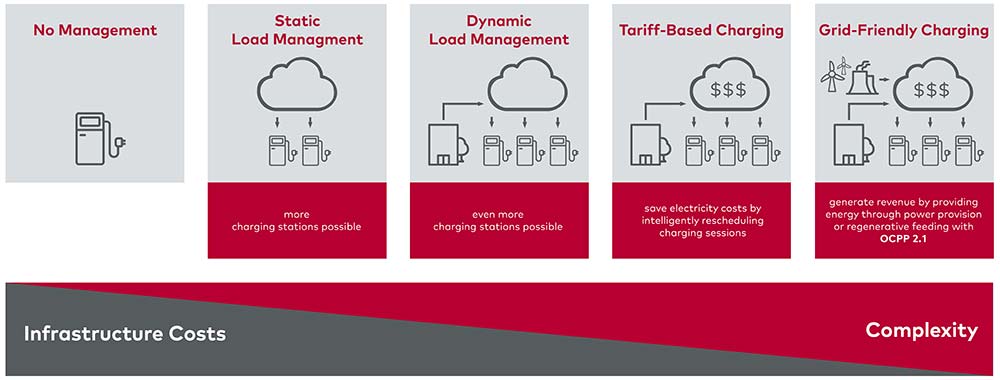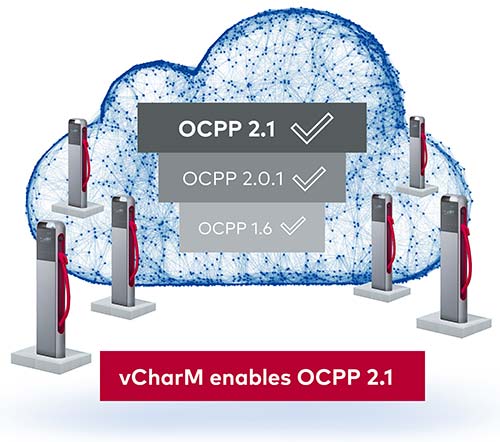As part of the OCA Plugfest 2024, Vector’s software vCharM was one of the first CSMS to successfully test the current draft of OCPP 2.1 against various charging station manufacturers. Functions supported by OCPP 2.1, such as bidirectional charging, represent a potential source of revenue for charging station operators.
The Open Charge Alliance (OCA) is developing and promoting the Open Charge Point Protocol (OCPP), which enables standardized and interoperable communication between charging stations and charging station management systems (CSMS). The interoperability of the draft OCPP 2.1 version was tested at the Plugfest organized by the OCA on the Vector Campus in Stuttgart, Germany. In future, it should enable functionalities such as bidirectional charging, dynamic tariffs and real-time cost transparency. Vector’s CSMS vCharM was one of the first to successfully test OCPP 2.1 against various charging station manufacturers.
In its most complex stage to date, OCPP 2.1 enables grid-friendly charging, in which charging is controlled in such a way that it maintains grid stability, avoids peak loads and makes optimum use of renewable energy sources. A direct communication interface to energy suppliers makes it possible to react to price fluctuations and energy surpluses: In the event of energy bottlenecks and therefore higher prices, less energy is charged or even energy is fed back from the electric vehicles, while more power is drawn when there is an energy surplus. By implementing the latest OCPP 2.1 standard in vCharM, charging station operators will not only be able to work more efficiently and save costs in future, but also potentially generate additional income and contribute to the stability and sustainability of the electricity grid.

Overview of various load management levels through to grid-friendly charging with revenue potential Image rights: Vector Informatik GmbH
vCharM is also cost-efficient thanks to the intelligent control of charging points for peak shaving. Peak shaving takes place via static or dynamic power limits depending on the building’s consumption. The installation of charging points without peak shaving would usually mean higher costs for operators, as the simultaneous charging of electric vehicles results in a high-power peak, which leads to high annual connection costs and may also make it necessary to expand the electrical infrastructure. Peak shaving controls the charging power in such a way that peak loads are prevented, the existing grid connection power is sufficient and investments in connection expansion are often not necessary. By using dynamic energy tariffs, vCharM can also be used to postpone charging sessions for electric vehicles to cost-effective times by using predictions of the electricity price for the next day (day-ahead) and forecasts of vehicle idle times and energy quantities.
More information at: https://www.vector.com/vcharm/



